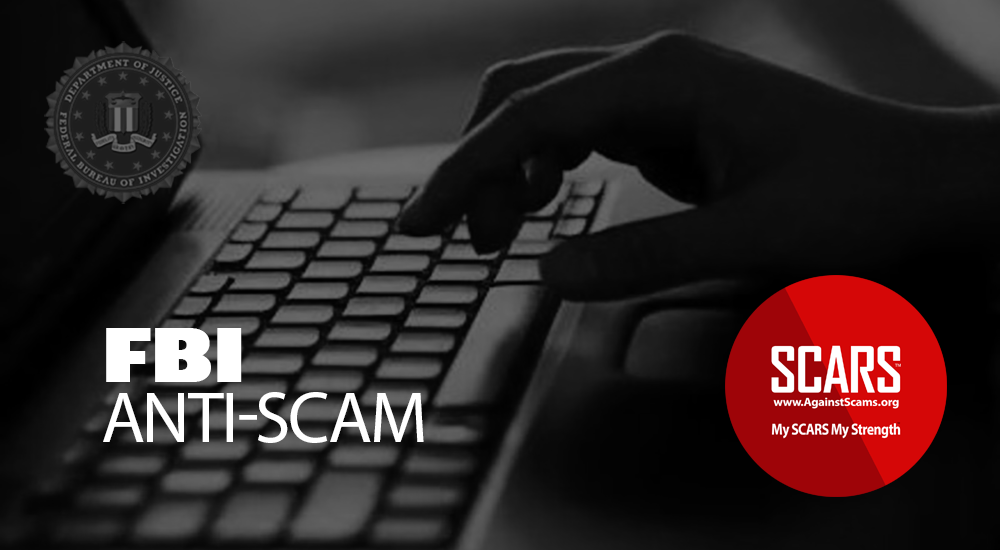The “Magazine Scam”
Target Confused Seniors With Magazine Rip-Off Scams
The Magazine Scam – Victim Information
From the U.S. Attorney, District of Minnesota
What is the “Magazine Case”?
The “magazine case” is a series of federal cases brought in the District of Minnesota, which charge more than 60 defendants with a telemarketing scam that swindled seniors and other vulnerable victims out of more than $300 million. The scam has been going on for at least twenty years, and it has victimized well more than 100,000 people. The companies who perpetrated this scheme were located in Minnesota as well as in states across the country and were also located in Canada and The Philippines. The victims of this scheme were located in all 50 U.S. states.
How It Worked?
The defendants carried out their telemarketing fraud scheme by calling victims/consumers who had one or more existing magazine subscriptions and offering to reduce the cost of an existing magazine subscription.
THE DEFENDANTS WERE LYING
In reality, they were not calling from the victims/consumers’ magazine companies, and they were not calling to reduce the cost of an existing subscription. Instead, the defendants were tricking the victims into signing up for entirely new magazine subscriptions, which they did not want and often could not afford. This resulted in many victims being billed by several—even dozens—of magazine companies every month. Some victims were scammed out of hundreds or thousands of dollars. Other so-called “mega victims” were scammed out of $50,000 or more.
Some defendants would call victims/consumers, including “mega victims,” claiming they were calling from the “cancellation department.” The defendants would offer to cancel the magazines the victims were receiving and pay off money the victims “owed” in exchange for a large payment, often of $199 or $507. The defendants were lying. They were not calling from a cancellation department and were not canceling any existing subscriptions or paying off any money owed. In reality, they were simply stealing the money from the victims.
If You Received A Letter?
You received a letter in the mail from the FBI/Postal Inspection Service with a return envelope asking you questions about the case. Is that letter legitimate? Should you fill it out?
Yes and yes, please.
As a part of the government’s victim outreach, law enforcement sent letters to all identified victims in the case, providing the same sort of information they are providing here and elsewhere online. This letter included a victim questionnaire and a pre-paid return envelope. If you received such a letter it is from law enforcement. They ask that you fill it out and return it. Or, if it is easier for you, fill out that same information online, located here: https://forms.fbi.gov/seeking-victims-in-magazine-subscription-scams-investigation. Note that you do not need to send them your information twice—either online or by letter is fine, whichever is better for you.
If you didn’t get a letter, that doesn’t mean you aren’t a victim of the magazine scam.
They are working to identify victims through their records but also rely on the public to self-identify as victims. Again, if you think you or a loved one may be a victim of the magazine scam, fill out the online victim information form above.
How Do You Know If You Are A Victim In The Magazine Case?
Law enforcement has identified many of the victims in the magazine case. Federal agents have reached out to some of these victims by phone, and are also sending letters to identified victims of the case asking for victim information.
LAW ENFORCEMENT WILL NEVER ASK YOU FOR MONEY OR CONFIDENTIAL INFORMATION IF YOU RECEIVE A CALL
If you have not been contacted by law enforcement, that doesn’t mean you aren’t a victim. As they continue to investigate the case they are asking victims to self-identify if they believe they have been victimized.
If the scheme above sounds familiar to you, and/or if your credit card has been charged by the companies involved in this scheme, they ask that you fill out the FBI online survey available HERE. A federal agent will review your responses and contact you accordingly.
A list of companies involved in this scheme is available HERE—look for these companies when you check your credit card or bank statements for possible fraudulent charges.
Can You Get Your Money Back?
If you were defrauded by any of the defendants as a part of this scheme, you can apply to get “restitution”—to get a portion of the money you lost paid back to you by the defendants. The government has seized money and assets from the defendants, and the defendants are being ordered to pay millions more in restitution.
However, you should know, that while each victim should be able to get some amount of restitution, given the losses in the case, it is unlikely that you will be paid back 100% of what was stolen from you. To submit your restitution, please fill out the form attached HERE. Scan and email questionnaire and attachments to MagazineVictims@fbi.gov or mail questionnaire and any additional materials to:
FBI Minneapolis
Attn: Magazine Victims
1501 Freeway Boulevard
Brooklyn Center, MN 55430
Why Was The Case Brought In Minnesota? What If I Don’t Live In Minnesota?
The scam occurred across the United States so a federal case could have been brought in many different places in the country. The US Attorney’s Office for Minnesota happened to investigate and bring the case, in part due to a cluster of fraudulent companies located in Minnesota. The fact that the case was brought in Minnesota does not affect your rights as a victim, regardless of where you live.
How Many Defendants Have Been Charged? Can I Read The Indictment?
To date, 63 defendants have been charged in several related cases, all known broadly as “the magazine case.” Right now, there are six related cases, but they all essentially charge the same scheme. The indictments are as follows:
- United States v. Russell Rahm, et al., 20-cr-232 (JRT/KMM) (43 defendants)
- United States v. Daniel Mathias, et al., 20-cr-231 (JRT/BRT) (8 defendants)
- United States v. Cody Timmerman, et al., 20-cr-233 (JRT/KMM) (9 defendants)
- United States v. Wayne Dahl, 18-cr-305 (JRT) (1 defendant)
- United States v. Michael Oelrich, 20-cr-128 (JRT) (1 defendant)
- United States v. Carol Olberg, 20-cr-285 (JRT) (1 defendant)
The defendants were charged by indictment with several crimes, including mail fraud, wire fraud, and/or conspiracy to commit those crimes. Most of the defendants were also charged under the SCAMS Act, a law passed by Congress specifically aimed at increasing the penalties for defendants who scam senior citizens using telemarketing schemes. The indictments describe the crimes in detail and can be found here:
- United States v. Russell Rahm, et al.
- United States v. Daniel Mathias, et al.
- United States v. Cody Timmerman, et al.
- United States v. Wayne Dahl
- United States v. Michael Oelrich
- United States v. Carol Olberg
Will There Be A Trial? Will I Have To Testify?
Right now, the case is in the discovery and motions stage of the court proceedings, which will likely last until at least fall 2021.
During this period of time, many of the defendants will plead guilty. For any defendant who pleads guilty, they will not have a trial.
The government expects that some defendants will decide to plead not guilty and exercise their right to a jury trial. These jury trials are likely to happen in 2022. While some victims may be asked to testify at trial, because there are so many victims, it is unlikely that a victim would have to testify if they do not wish to do so.
When will the defendants be sentenced? Who is the judge who will sentence them? What sorts of sentences will they receive?
Each defendant who is found guilty—either because they plead guilty or because a jury finds them guilty after a trial—will be sentenced.
The defendants will typically face a sentence between zero and thirty years in prison. The federal sentencing guidelines suggest a “range” of imprisonment a defendant should receive, in months. However, this guidelines range is just a recommendation. The sentencing judge can sentence each defendant to whatever sentence the judge believes is fair and just, within the statutory range (0 – 30 years, typically).
The judge assigned to the magazine case is Chief Judge John R. Tunheim. Chief Judge Tunheim is the chief of the Federal District Court in Minnesota. His courtroom is on the top floor of the federal courthouse (floor 15) in Minneapolis, Minnesota. While hearings, such as guilty pleas and sentencings, are typically held in person, because of the COVID-19 pandemic, the hearings are currently occurring via Zoom. Chief Judge Tunheim will be the sentencing judge in the case and will decide what is a just and fair sentence for each of the magazine defendants.
While the government does not decide the sentences for the defendants, because the government charged defendants at a range of levels, from lower-level telemarketers—who made little money from the fraud—to scheme leaders or “kingpins”—who directed the fraud and made millions of dollars, the government expects that the sentences will also range in severity, based on several factors, including a defendant’s role in the scheme and whether a defendant accepted responsibility for his or her crimes. The sentencings will likely follow any trials in the case and are likely to occur in 2021 and 2022.
Can You Let The Judge Know What Sort Of Sentence You Think A Particular Defendant Or The Magazine Defendants Should Receive? Can I Tell The Judge How You Were Victimized Or How This Crime Affected You?
Yes. The Crime Victims’ Rights Act provides victims with the right to be reasonably heard at any public proceeding involving release, plea, and sentencing.
One way you may do this is by submitting a “victim impact statement”. DoJ encourages victims to be heard. If you want to tell the judge who will sentence the defendants anything about how this crime has affected you, you can submit a “victim impact statement.” A victim impact statement is just a way of saying a letter or statement from a victim. There is not one “right way” to submit a victim impact statement. You can write a letter and include anything in it you want the judge to know prior to sentencing. You can also print out the attached form with suggested questions you can fill out for the judge: HERE. Should you choose to submit a victim impact statement, you can send it to the government. Law enforcement will make sure all of these letters are submitted to the Court.
You can mail your victim impact statement to this address:
FBI Minneapolis
Attention: Magazine Victims
1501 Freeway Boulevard
Brooklyn Center, MN 55430
Or you can also submit your victim impact statement via email to this email address: MagazineVictims@fbi.gov
Can You Talk To Someone On The Phone About This Scam?
They do not have a phone line set up, in part due to the vast numbers of victims in the case. If you call the FBI, Postal Inspection Service, or the U.S. Attorney’s Office, you will be redirected to the online victim information form. After you fill out that form—or return the pre-paid letter you received from us in the mail—you can expect a federal agent to reach out to you, including by phone, to make contact.
What If An Attorney Contacts You About The Case? Do You Have To Talk To Them?
It is unlikely an attorney or investigator will contact you, but if they do, it is entirely your choice whether or not you want to talk with them. Understand that they may represent one of the defendants charged in the case. The only people who will contact you from the government will be federal agents—FBI agents or Postal Inspectors—who will identify themselves as such.
Never talk to anyone who asks for confidential information, such as banking information.
Do You Have Rights As A Victim?
Absolutely yes, you do.
A federal law entitled the Crime Victims’ Rights Act (18 USC § 3771) sets out the rights that victims of federal crimes have during legal proceedings. Some of these rights include the right to be notified of public court proceedings, the right to be reasonably heard during court hearings involving release, plea, and sentencing, including during the sentencing process, and the right to be treated with fairness and with respect for the victim’s dignity and privacy. A full copy of the Crime Victims’ Rights Act is here: https://www.justice.gov/usao/resources/crime-victims-rights-ombudsman/victims-rights-act
You can also visit the FBI’s website for the magazine case, located here, which provides information about this case and other scams targeting the elderly and otherwise vulnerable: https://www.fbi.gov/resources/victim-services/seeking-victim-information/seeking-victims-in-magazine-subscription-scams-investigation
I Want To Know Even More Details About The Magazine Case, Including Which Defendants Have Pled Guilty And When Each Defendant Will Be Sentenced.
A chart of every defendant and the status of their case is available here: Defendant Information Chart. This chart will be continually updated as the cases move forward.
TAGS: SCARS, Information About Scams, Anti-Scam, Scams, Scammers, Fraudsters, Scam Victims, Phone Fraud, Magine Case, magazine Scam, Online Crime Is Real Crime, U.S. Attorney, FBI, Department of Justice
PLEASE SHARE OUR ARTICLES WITH YOUR FRIENDS & FAMILY
HELP OTHERS STAY SAFE ONLINE – YOUR KNOWLEDGE CAN MAKE THE DIFFERENCE!
THE NEXT VICTIM MIGHT BE YOUR OWN FAMILY MEMBER OR BEST FRIEND!
By the SCARS™ Editorial Team
Society of Citizens Against Relationship Scams Inc.
A Worldwide Crime Victims Assistance & Crime Prevention Nonprofit Organization Headquartered In Miami Florida USA & Monterrey NL Mexico, with Partners In More Than 60 Countries
To Learn More, Volunteer, or Donate Visit: www.AgainstScams.org
Contact Us: Contact@AgainstScams.org




Please Leave A Comment - Tell Us What You Think About This!